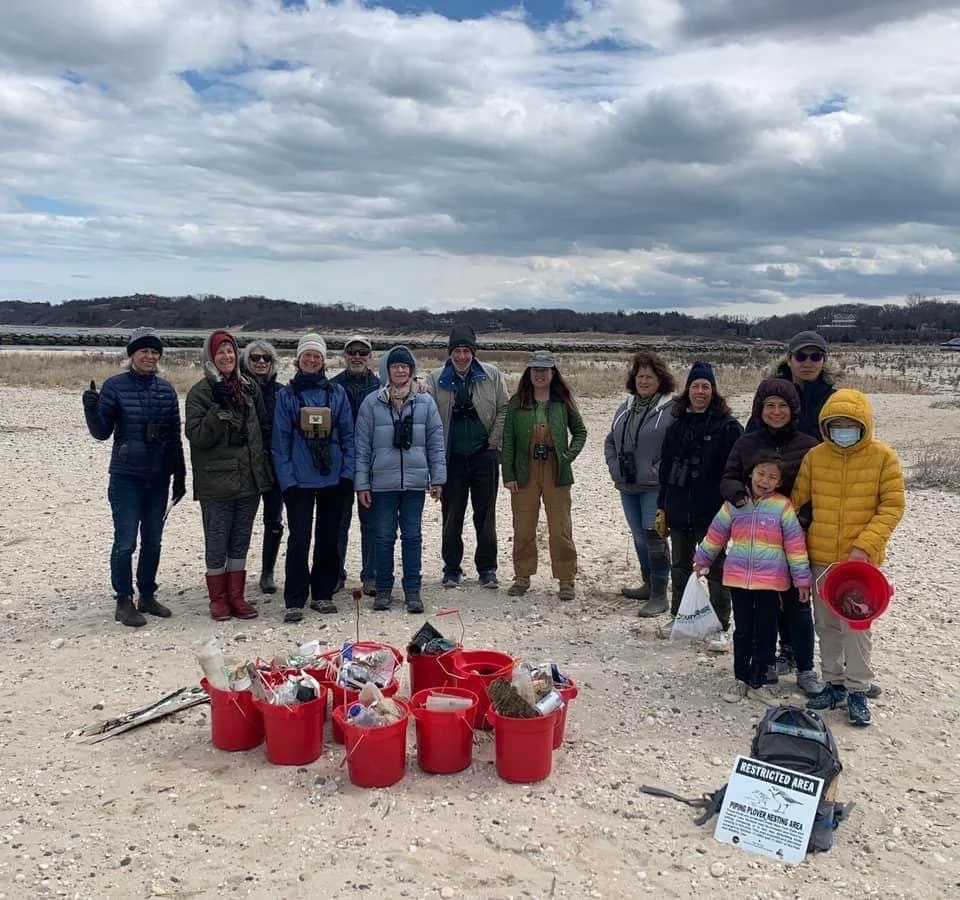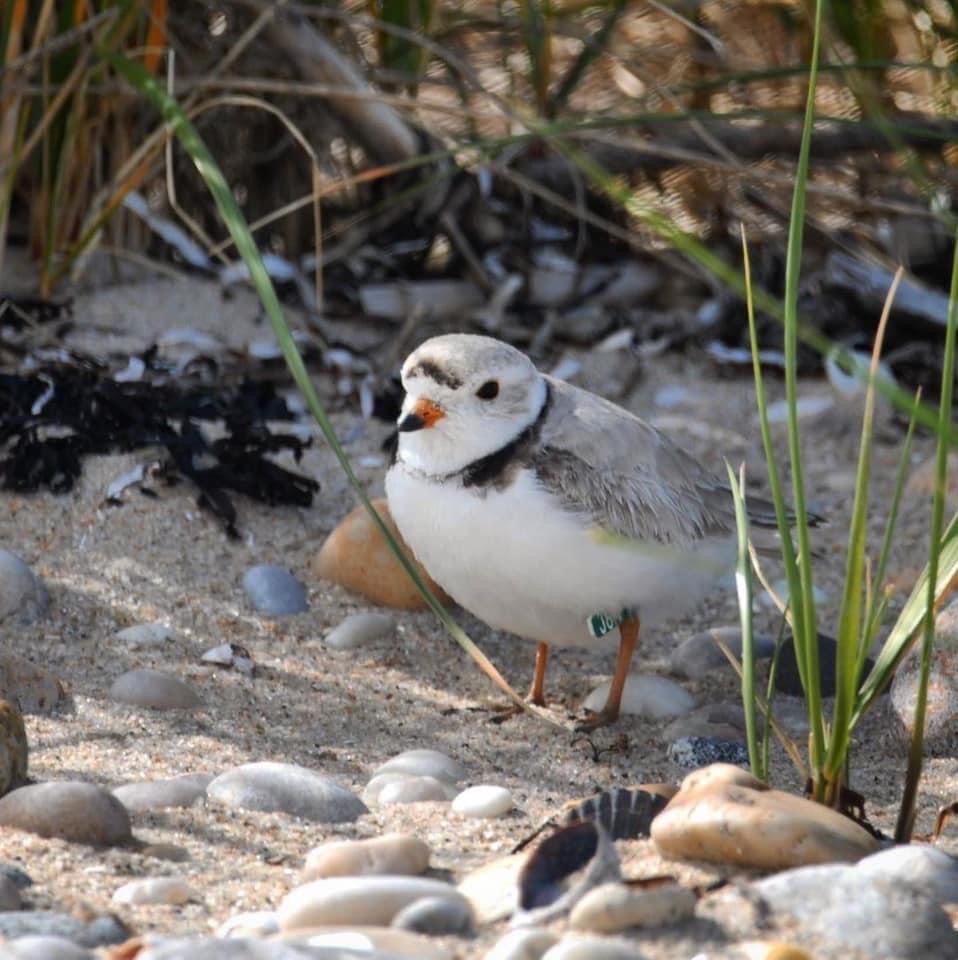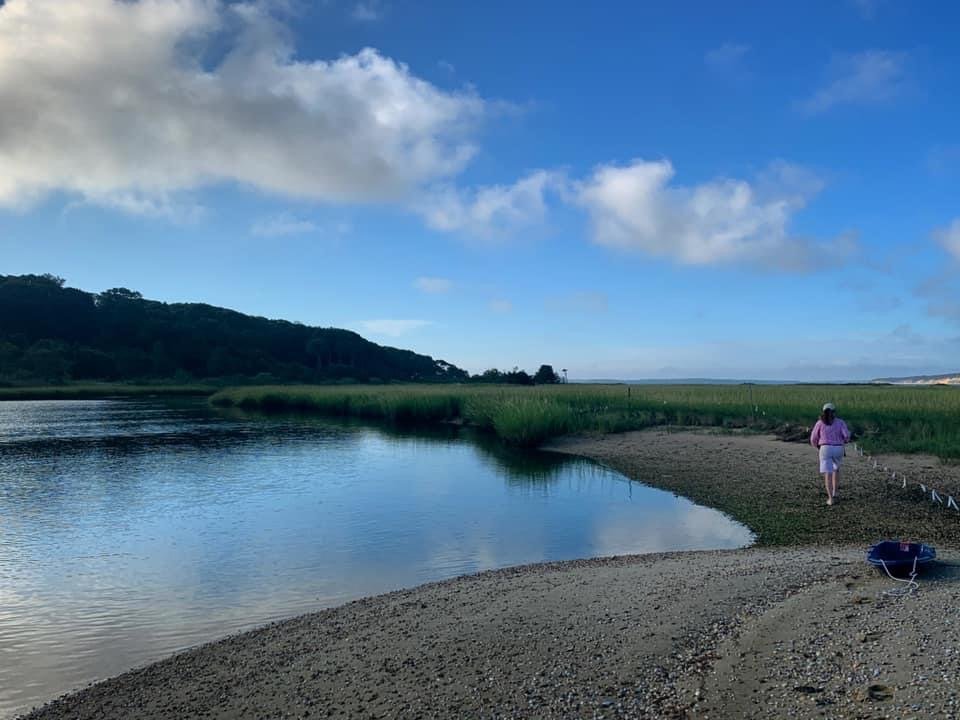SHOREBIRD STEWARDSHIP & MONITORING
North Fork Audubon Society (NFAS) is monitoring endangered and threatened shorebirds on behalf of Southold Town in 2023 and 2024, and in 2021 and 2022. Shorebird monitoring involves visits several times a week to approximately 18 beaches across the North Fork where Endangered Piping Plovers and Threatened Least Terns and Common Terns build nests and incubate eggs right on the beach. We fence off nest areas with string fencing to discourage people from walking through and accidentally stepping on nests and eggs. It is also important for people to keep their dogs leashed, since even friendly dogs will scare the parent birds off the nest, leaving the eggs to get chilled and perhaps die. Jennifer Murray, NFAS Shorebird Manager, is assisted by 18 volunteer stewards who record data from their site visits, which gets compiled for Southold Town, the New York Department of Environmental Conservation (DEC) and ultimately for the U.S. Fish & Wildlife Service.
For decades, both North Fork Audubon and Group for the East End have been involved in shorebird monitoring and community education. This year, both groups will be conducting outreach to children and adults at beaches, schools and elsewhere to raise awareness of the need to “share the shore” with the birds.
Resources for Volunteers
Can you help? Please email shorebirdmanager@northforkaudubon.org
Daily Site Visits Form
Be a Good Egg Pledge Sheet
Upcoming Training for the 2024 season!
We will be holding 2 Shorebird Monitoring Training Sessions held at Breakwater Beach in Mattituck from 9-11am. After the training there will be beach cleanups, please stay if you can!
Register the session, by clicking the date below:
Photos by J. Murray
Information and Resources
Written materials
“US Fish & Wildlife Service 2018 booklet “Long Island Steward Training Manual for Threatened and Endangered Species”, 115 pages. Read or download HERE. Recommended reading:
Pages 9-17, “Your Role as a Steward”, monitoring techniques
Pages 32-47, fact sheets on Piping Plovers and Least Terns
Pages 71-84, useful photos of Piping Plovers and Least Terns at various ages from chick to adults
Audubon Society’s 59 page 2018 “Coastal Stewardship Toolkit” contains a wealth of information on many aspects of shorebird monitoring. Review the table of contents for topics of interest. Read or download HERE
Why Leashing Dogs Is an Easy Way to Protect Birds and Their Chicks
It's nesting season for piping plovers — here's what you should know
Videos
YouTube video, excerpts of the April 15, 2023 shorebird steward training
North Fork Audubon Society’s 2022 videos of March & April training sessions – if you missed the training sessions, these provide highlights:
North Fork Audubon Training #1, March 26, 2022 Overview of shorebird monitoring, 13:40 minutes
North Fork Audubon Training #2, April 2, 2022 Focus on installing symbolic fence posts, string and flags, 23:12 minutesNorth Fork Audubon Training #3 April, 9, 2022 Piping Plovers biology, 31:14 minutes
Short video produced by North Fork Audubon and high school students, directed by Paul Stoutenburgh Jr. and featuring Tom Damiani:
Protecting Piping Plovers 2012 4:48 minutesConnecticut Audubon Society’s 2022 videos for beginning and experienced shorebird stewards:
Training for Returning Volunteers One hour video focusing on Connecticut but relevant to Long Island’s North Fork
Training for New Volunteers Comprehensive 1 hour and 50 minute video15 minute video about shorebirds in Sandy Hook, New Jersey, split into two parts on YouTube:
Part 1, general conservation overview Piping Plovers Sandy Hook Part 1 mp4 7 minutes
Part 2, monitoring Piping Plovers Piping Plovers Sandy Hook Part 2 mp4 8 minutes





